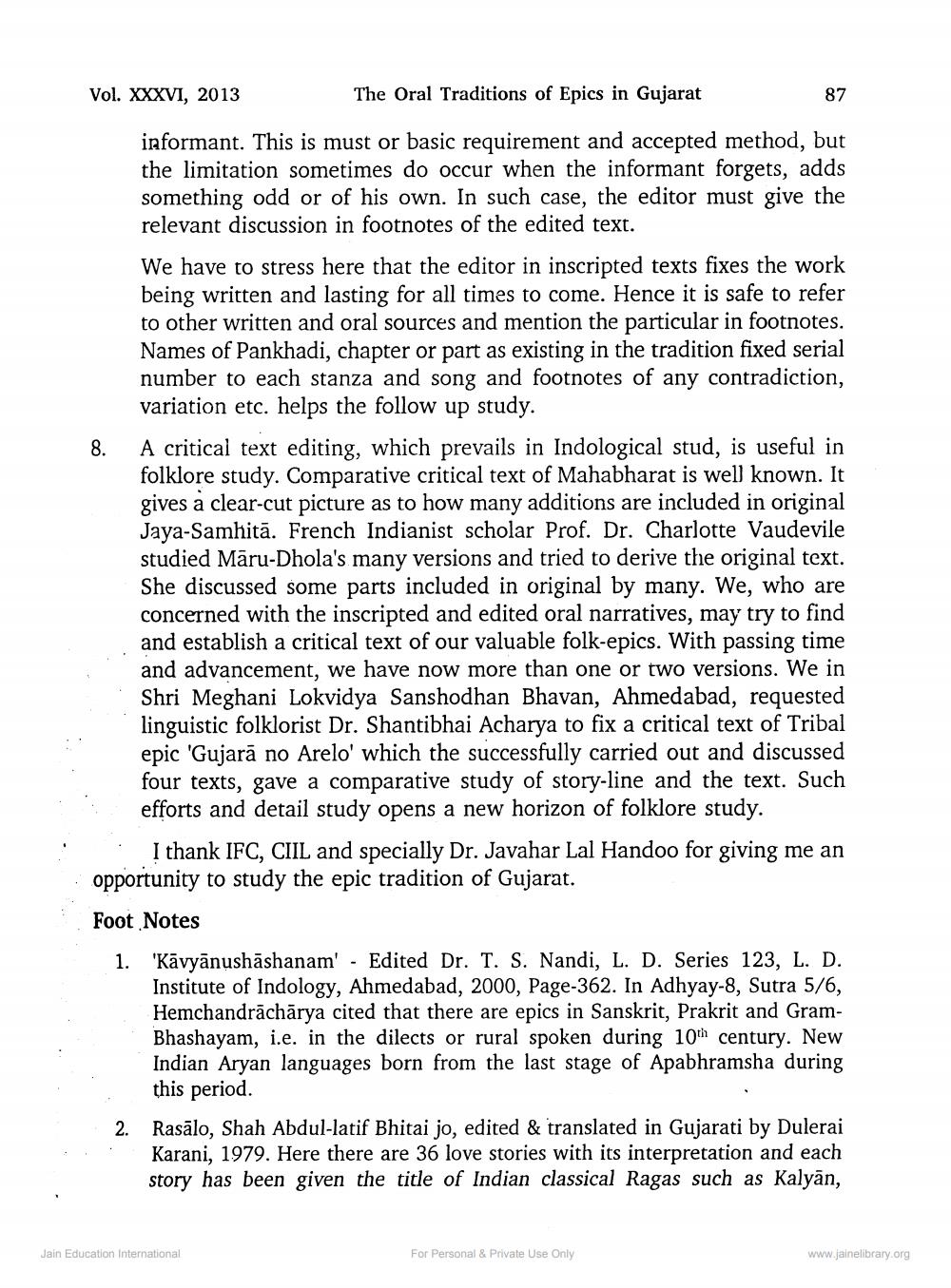________________
Vol. XXXVI, 2013
The Oral Traditions of Epics in Gujarat
87
8.
informant. This is must or basic requirement and accepted method, but the limitation sometimes do occur when the informant forgets, adds something odd or of his own. In such case, the editor must give the relevant discussion in footnotes of the edited text. We have to stress here that the editor in inscripted texts fixes the work being written and lasting for all times to come. Hence it is safe to refer to other written and oral sources and mention the particular in footnotes. Names of Pankhadi, chapter or part as existing in the tradition fixed serial number to each stanza and song and footnotes of any contradiction, variation etc. helps the follow up study. A critical text editing, which prevails in Indological stud, is useful in folklore study. Comparative critical text of Mahabharat is well known. It gives a clear-cut picture as to how many additions are included in original Jaya-Samhitā. French Indianist scholar Prof. Dr. Charlotte Vaudevile studied Māru-Dhola's many versions and tried to derive the original text. She discussed some parts included in original by many. We, who are concerned with the inscripted and edited oral narratives, may try to find and establish a critical text of our valuable folk-epics. With passing time and advancement, we have now more than one or two versions. We in Shri Meghani Lokvidya Sanshodhan Bhavan, Ahmedabad, requested linguistic folklorist Dr. Shantibhai Acharya to fix a critical text of Tribal epic '
Gujarā no Arelo' which the successfully carried out and discussed four texts, gave a comparative study of story-line and the text. Such efforts and detail study opens a new horizon of folklore study.
I thank IFC, CIIL and specially Dr. Javahar Lal Handoo for giving me an opportunity to study the epic tradition of Gujarat. Foot Notes 1. "Kāvyānushāshanam' - Edited Dr. T. S. Nandi, L. D. Series 123, L. D.
Institute of Indology, Ahmedabad, 2000, Page-362. In Adhyay-8, Sutra 5/6, Hemchandrācharya cited that there are epics in Sanskrit, Prakrit and Gram Bhashayam, i.e. in the dilects or rural spoken during 10th century. New Indian Aryan languages born from the last stage of Apabhramsha during
this period. 2. Rasālo, Shah Abdul-latif Bhitai jo, edited & translated in Gujarati by Dulerai
Karani, 1979. Here there are 36 love stories with its interpretation and each story has been given the title of Indian classical Ragas such as Kalyān,
Jain Education International
For Personal & Private Use Only
www.jainelibrary.org




